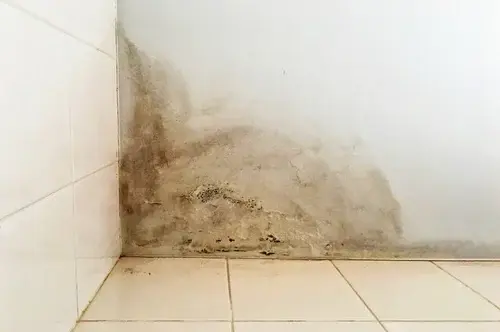What Is Water Damage Restoration?
- 24 Hour Restoration

- Jul 9
- 4 min read

Water damage can happen to anyone. One day your home is dry and safe. The next day, you're dealing with flooding from a burst pipe or storm damage.
When water invades your home, you need to act fast. That's where water damage restoration comes in.
Understanding Water Damage Restoration
What is water damage restoration? The process of cleaning up and fixing water-damaged property. This service helps bring your home back to its original state before the water damage happened.
Water damage restoration involves several key steps. First, experts remove all the standing water.
Next, they dry out wet areas completely. Then they clean and sanitize everything. Finally, they repair or replace damaged materials.
The goal is simple. Restoration teams want to save as much of your property as possible. They work quickly to prevent more damage from happening.
Why Water Damage Restoration Matters
Water damage gets worse over time. Within 24 hours, mold can start growing. Within 48 hours, wood begins to warp and swell. After a week, serious structural damage can occur.
Quick action saves money. The faster you start the water damage restoration process, the less damage occurs. This means lower repair costs for you.
Professional restoration also protects your health. Standing water breeds bacteria and mold. These can cause serious breathing problems and other health issues.
The Complete Water Damage Restoration Process
Step 1: Emergency Contact and Assessment
When you call for emergency water damage restoration, teams respond quickly. Most companies offer 24-hour service because water damage doesn't wait for business hours.
The first step involves a thorough inspection. Restoration experts check the extent of damage. They look for hidden water in walls, floors, and ceilings. Special tools help detect moisture you can't see.
Step 2: Water Removal
Water removal happens next. This step removes all standing water from your property. Powerful pumps and vacuums extract water quickly.
The type of water affects the cleanup process. Clean water from broken pipes is easier to handle. Gray water from appliances needs more care. Black water from sewage requires special safety measures.
Step 3: Drying and Dehumidification
After water removal, the drying process begins. This step is crucial for preventing mold growth. Industrial fans and dehumidifiers work together to remove moisture from the air.
Restoration teams monitor moisture levels constantly. They use special meters to check walls, floors, and furniture. Everything must be completely dry before moving to the next step.
Step 4: Cleaning and Sanitizing
Water cleanup includes thorough cleaning of all affected areas. This prevents bacteria and mold from growing later. Restoration experts use professional-grade cleaners and sanitizers.
Personal items get special attention. Photos, documents, and furniture receive careful cleaning when possible. Some items may need specialized restoration techniques.
Step 5: Restoration and Repairs
The final step brings everything back together. Minor repairs might include replacing drywall or installing new carpet. Major repairs could involve rebuilding entire rooms.
Some restoration projects take days. Others take weeks or months. The timeline depends on how much damage occurred and what needs fixing.
Different Types of Water Damage
Category 1: Clean Water
Clean water comes from broken supply lines or sink overflows. This water is relatively safe but still causes damage. Clean water restoration is usually straightforward.
Category 2: Gray Water
Gray water contains some contamination. It might come from washing machines or dishwashers. This water requires more careful handling during cleanup.
Category 3: Black Water
Black water is heavily contaminated. It comes from sewage backups or flood water. This type requires special safety equipment and procedures.
Signs You Need Water Damage Restoration
Sometimes water damage is obvious. Flooding leaves no doubt about the problem. But other signs are more subtle.
Watch for musty odors. These often indicate hidden moisture problems. Discolored walls or ceilings suggest water damage too.
Warped floors are another warning sign. So are water stains on walls or ceilings. Don't ignore these symptoms. Early action prevents bigger problems.
Home Water Damage Repair vs Professional Service
Some people try DIY water cleanup. This approach works for small spills. But most water damage needs professional help.
Professional teams have specialized equipment. They own industrial pumps, fans, and dehumidifiers. These tools work much faster than household equipment.
Professionals also understand safety issues. They know how to handle contaminated water safely. They understand electrical hazards in flooded areas.
Water Mitigation: Prevention is Key
Water mitigation means taking steps to prevent damage. This includes regular maintenance of plumbing systems. Check pipes regularly for leaks or wear.
Clean gutters and downspouts regularly. Make sure water flows away from your foundation. Install water alarms near water heaters and washing machines.
Consider flood insurance if you live in a flood-prone area. Standard homeowner's insurance doesn't cover flood damage.

Choosing the Right Restoration Company
Not all restoration companies are equal. Look for companies with proper certification. The Institute of Inspection, Cleaning and Restoration Certification (IICRC) sets industry standards.
Check for 24-hour emergency service. Water damage doesn't wait for convenient times. You need a company that responds quickly any time of day.
Ask about their equipment and methods. Modern restoration uses advanced drying techniques and moisture detection tools.
What Water Damage Restoration Explained Means for You
Understanding water damage restoration helps you make better decisions. You'll know what to expect during the process. You'll also understand why quick action matters so much.
Remember that every water damage situation is different. A small leak requires different treatment than major flooding. Professional restoration teams assess each situation individually.
The Bottom Line
Water damage restoration is more than just cleaning up water. It can be a comprehensive process that saves your property and protects your health. The restoration process involves water removal, drying, cleaning, and repairs.
Quick action makes all the difference. The sooner you start restoration, the better your results will be. Don't try to handle serious water damage alone.




Comments